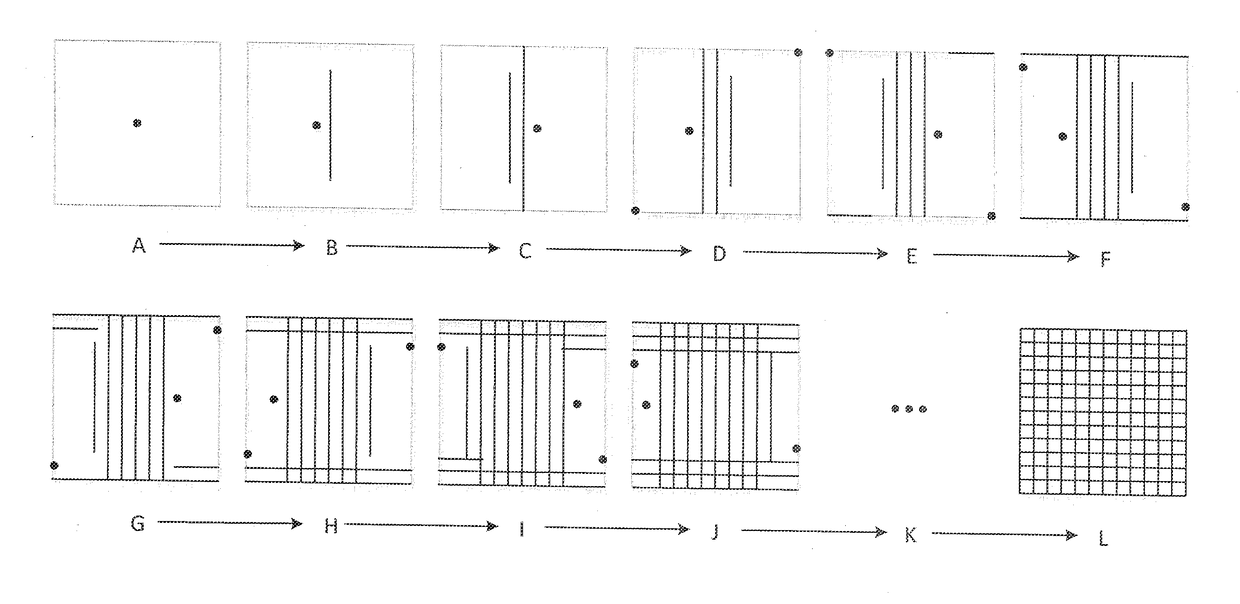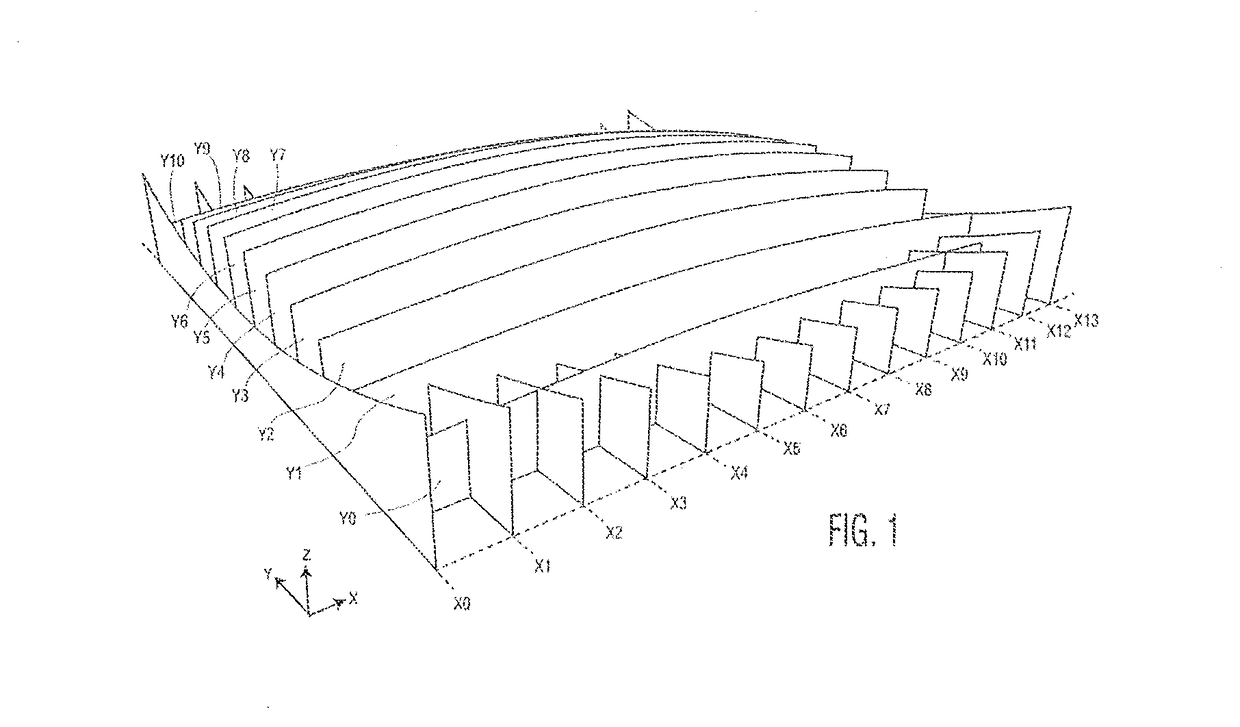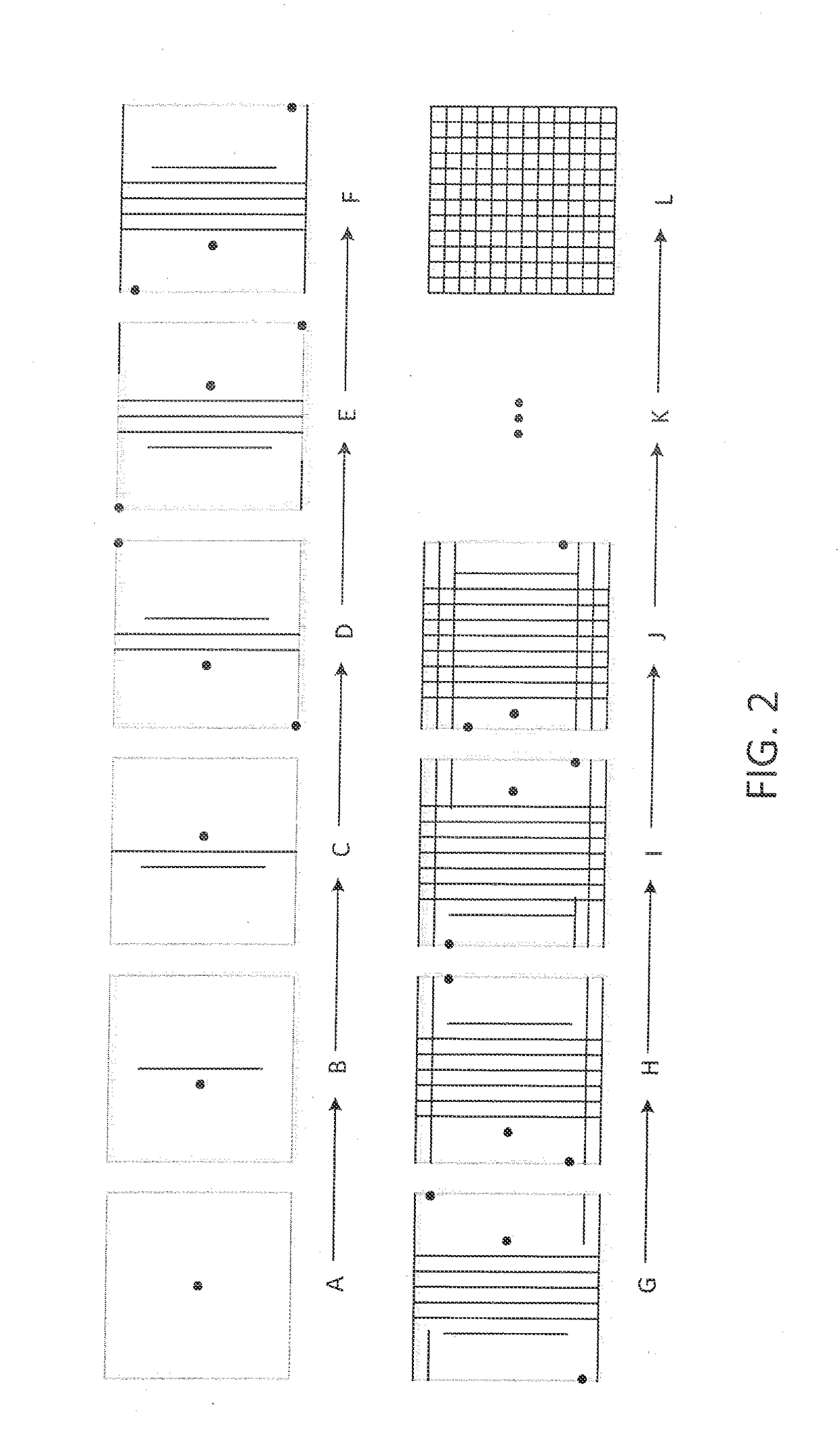Blade design for cutting food and other items
- Summary
- Abstract
- Description
- Claims
- Application Information
AI Technical Summary
Benefits of technology
Problems solved by technology
Method used
Image
Examples
Embodiment Construction
[0033]The preferred embodiments of the present invention will now be described with reference to FIGS. 1-8 of the drawings.
[0034]FIG. 1 shows a first preferred embodiment of the improved blade design according to the invention, in which there is a grid of non-flat blades along two axes. The blades on the Y axis, with labels Y0 through Y10, are convex with each blade having a peak point on the vertical Z axis. As may be seen, no two Y axis blades are at the same vertical elevation, each blade being slightly higher or lower than its neighboring Y axis blade. This is what allows the incremental penetration of the target item with minimum force, namely, that no two Y axis blades start to penetrate the food item at the same time. The Y axis blades are highest in the center and decrease in the Z axis as they move away from center. Each blade on the Y axis has a single peak point at or somewhat near in the center which commences the blade's penetration into the target item. The center Y ax...
PUM
 Login to View More
Login to View More Abstract
Description
Claims
Application Information
 Login to View More
Login to View More - Generate Ideas
- Intellectual Property
- Life Sciences
- Materials
- Tech Scout
- Unparalleled Data Quality
- Higher Quality Content
- 60% Fewer Hallucinations
Browse by: Latest US Patents, China's latest patents, Technical Efficacy Thesaurus, Application Domain, Technology Topic, Popular Technical Reports.
© 2025 PatSnap. All rights reserved.Legal|Privacy policy|Modern Slavery Act Transparency Statement|Sitemap|About US| Contact US: help@patsnap.com



